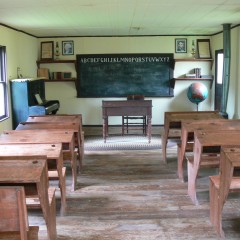This weekend in Skamania in southwest Washington, teachers from throughout the state will convene because of a series of simple truths:
1. Public education, as a system, needs to change.
2. Teachers constitute the largest number of professionals employed in the public education system.
3. When new initiatives or mandates are levied upon public schools, teachers are those who are charged with enacting these.
This weekend, these convened teachers will be learning about the unique skills and dispositions of being a teacher-leader. It is not quite the same as being a great teacher, and it is not the same as working hard. Like being a teacher, being a teacher-leader involves a complex and often hidden set of competencies.
Why cultivate this? The answer is in the simple truths above…with particular attention to number three: when new initiatives or mandates are levied upon public schools, teachers are charged with enacting these. There are two levels within this truth where skilled teachers can (and do) make a tremendous difference.
First, strong teacher leaders have the skills, dispositions, and confidence to step forward and influence the crafting of new initiatives and mandates. Teacher leaders know that complaining and protesting is not enough… instead, they know that engaging in crafting solutions is a way to improve the system.
Second, strong teacher leaders have the skills, dispositions, and confidence to take all of these mandates (good, bad, and ugly) and process them into practices that positively impact student learning. Teacher leaders know that neither complaints nor mere compliance are appropriate… instead, they know how to distill all the mess into a clear and consistent focus on students.
The USDE’s Teach to Lead initiative is helping to bring teacher leadership to the forefront. However, we have amazing teacher leaders all over the state of Washington whose work should be highlighted as well.
Stories from School readers: What are some teacher leadership success stories that help to prove that we, the teaching force, are the ones making meaningful change in our system? Respond in the comments below!
Photo Attribution: "Columbia river gorge from crown point" by Hux - Own work. Licensed under Public domain via Wikimedia Commons - http://commons.wikimedia.org/wiki/File:Columbia_river_gorge_from_crown_point.jpg#mediaviewer/File:Columbia_river_gorge_from_crown_point.jpg




